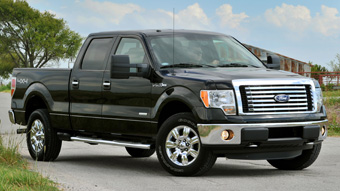
Leading environmental groups are calling on the Obama Admin. to enact a 62-mpg (3.8 L/100 km) fuel-economy standard in 2025, saying the strictest of three levels under consideration this summer makes the most sense for the U.S. environmentally and economically.
“This nation needs to get off oil,” says Margie Alt of Environment America, which joined the Union of Concerned Scientists, Sierra Club and Republicans for Environmental Protection in making the appeal in a letter delivered today to the White House.
“Sixty mpg would be a bold step in the right direction.”
The missive arrives as the National Highway Traffic Safety Admin. and the Environmental Protection Agency get ready to hunker down in the next few weeks to set standards for the 2017-2025 timeframe.
Expect a pitched battle inside the Beltway.
The White House sees an opportunity to mandate another history-making increase, as auto makers currently are marching toward a 35.5 mpg (6.6 L/100 km) standard for 2016 that set a precedent when it was enacted two years ago.
Environmentalists sense a political will for another big increase while Americans face record-high pump prices this summer and Detroit auto makers weakened by the recession now are reporting healthier sales and strong profits.
But auto makers selling cars and trucks in the U.S. today stand better fortified against stiffer regulation than in 2009, when the recession led to taxpayer-funded bankruptcies at General Motors and Chrysler.

Both GM and Chrysler have hiked spending on lobbyists in recent months, according to government disclosure documents, and the United Auto Workers union just hired a savvy Washington insider to help push its agenda.
The industry will argue 62 mpg could make vehicles too expensive for some people and price everyday Americans out of the market.
An increase in fleet-wide fuel economy to 62 mpg would represent a 6% hike per year between 2017 and 2025 and equivalent to emissions of 143 grams per mile in its final year. The government says it also will examine increases of 3%, 4%, and 5% annually.
“Unfortunately, the auto industry is pushing for the weakest standards,” Kevin Knobloch, president of the UCS, says during a conference call to discuss the groups’ appeal.
“Auto makers have the technology to meet the stronger standards, whether it is more efficient conventional combustion engines, smarter transmissions, high-strength materials, hybrid-electric drivetrains or advanced electric-drive technology,” he adds.
“All of these technologies are in some vehicles on the road today, but they should really be in all the vehicles on the road today.”
Knobloch claims strict rules benefit auto makers, evidenced by recent record profits amid the tighter mandates peaking in 2016 and brisk sales of vehicles with the best fuel efficiency last month.
The letter to Obama claims the industry opposes 62 mpg for the same reason it did not think it could implement items such as seatbelts and airbags: resistance to change.
The Washington-based Alliance of Automobile Manufacturers, which represents a dozen auto makers such as GM, Ford and Toyota, says the industry supports the highest fuel economy standard possible that takes into account factors including safety, technical feasibility and consumer demand.
In a statement provided to Ward’s, the AAM also notes the industry sells more than 160 models today achieving 30 mpg (7.8 L/100 km) or better.
But the lobbyist also warns consumers remain reluctant to pay a premium for the sort of technology necessary to reach highly aggressive standards, pointing out that last year the 34 hybrid models available in the U.S. were outsold by the Ford F-150 fullsize pickup.
Auto makers posted a victory of sorts earlier this year, when California agreed to concur with the EPA on future tailpipe standards, including regulations regarding carbon-dioxide emissions.
California was expected to strike out on its own over emissions, arguing it has unique environmental and public health demands, warranting stricter regulations. Had the state acted independently, the industry feared others could follow lead to a patchwork of regulations for auto makers.



